EMR (Electronic Medical Records) software offers healthcare providers large and small an affordable, dependable way to improve efficiency and enhance the patient experience.
Most contemporary EMR systems are cloud-based subscription services that require no setup and no special hardware. All training and support is provided by the vendor, who also oversees updates and ensures regulatory compliance.
If you are tired of paper records acting like an anchor on your practice, tired of resubmitting claims, and tired of losing patients to other providers, it is time to consider switching to an EMR system. The following are the best EMR software solutions updated for 2023.
Rankings
1. AMS Ultra Charts
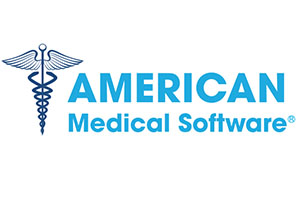
AMA Ultra Cloud is one of the few top-shelf EMR solutions that offers both cloud-based and on-site options. It covers all the EMR bases, including e-scripting, appointment scheduling, medical billing, and more, while being easy to learn and use.
What we like: The Ultra Charts system is easy to learn and easy to use. Training and support are first-rate from day one right through launch and beyond. Ultra Charts offers seamless integration of patient data, billing, and practice management.
Flaws: Probably a bit much for small individual practices. Not the cheapest EMR on the market either.
2. NexTech EMR
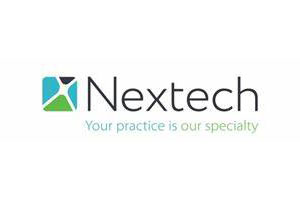
NexTech EMR is designed to address the needs of a variety of healthcare specialists. The company has more than 20 years of experience and puts it all to work to produce a highly refined, very intuitive EMR system that will transform the way you run your practice.
What we like: NexTech earns high marks for value. The support staff is knowledgeable and always there when you need them. There are plenty of helpful warnings and reminders, and the patient portal earns generally high praise.
Flaws: Beware of updates that may cause you to lose favorite functions.
3. InSync EMR
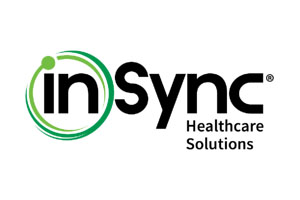
InSync EMR is a comprehensive suite of medical practice productivity tools that work in concert to improve efficiency and enhance the patient experience. Regardless of the size of your practice, you can be sure they will cover all the bases.
What we like: InSync tries to be all things to all practices and nearly succeeds. It covers all the bases and offers robust customization options. Support is generally good, and InSync will work for most any size practice.
Flaws: The InSync software is not the easiest to master. So expect a fairly steep learning curve.
4. ReLiMed EMR
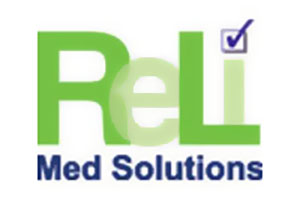
There is nothing flashy about the ReLiMed EMR system. It provides reliable, affordable practice management and electronic medical record tools that are easy to understand and require minimal training. Great for small and medium-size practices.
What we like: ReLiMed EMR is a reliable, affordable EMR software option for small to mid-sized practices. Shortcomings with the design (and there are a few) are neutralized by a knowledgeable, very helpful support team.
Flaws: Some EMR systems are highly intuitive. This is not one of them. Also, reporting is a weak point.
5. TheraNest EMR
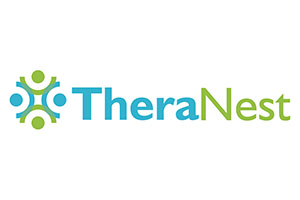
TheraNest is safe, reliable practice management software for mental health professionals, social workers, and more. The software is user-friendly, and the company offers a free 21-day trial for prospective clients.
What we like: TheraNest offers broad platform compatibility that allows practice managers to stay in the loop no matter where they are. The interface is user friendly, and the support team is at your beck and call from signup to launch.
Flaws: A few plans seem unreasonably expensive. The patient portal has a cold, impersonal feel to it.
6. Epic EMR
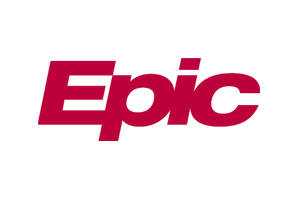
Epic EMR is suited to large practices, health clinics, and small to midsize hospitals. It offers full integration with your current office productivity tools, minimal disruption during implementation, and comprehensive support before, during, and after launch.
What we like: Epic provides powerful, effective EMR solutions for specialists and those involved in diagnostic, therapeutic, and custodial care. It can be easily integrated with your existing billing software or expanded to offer EHR functionality.
Flaws: The learning curve can be pretty steep. The patient portal is not the most user-friendly we encountered.
7. Pronto EMR
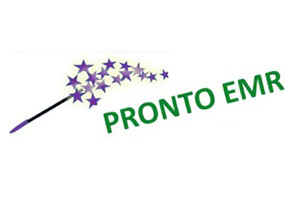
If you have a specialist practice, Pronto EMR can help you bring it to heel. They understand that those who run smaller practices need to wear lots of hats. And so they tailor their program to facilitate fast learning and easy integration.
What we like: Pronto EMR offers a very user-friendly interface. It provides numerous reminders, warnings, and alerts. It does a good job scouring claims for potential errors and is among the easiest EMR systems to pick up on.
Flaws: While uptime is excellent, response time is not always the best. Large practices will likely need something more comprehensive.
8. Web PT
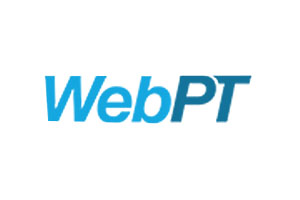
Web PT is a no-nonsense cloud-based EMR system designed to fulfill the needs of specialty practitioners. Truth be told, however, it works great for anyone with a small to midsize practice of any kind.
What we like: Web PT is an outstanding choice for specialty practices. The learning curve is modest, the price is affordable, and it is not loaded with superfluous functionality. It has a nice clean interface and offers first-class training and support.
Flaws: Seems designed strictly for outpatient practices. Not a great deal of customization potential.
9. PhraseExpander EMR
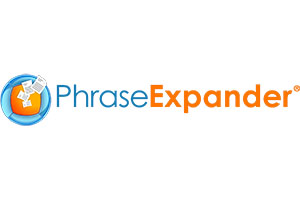
PhraseExpander is not an EMR in and of itself. Instead, it helps facilitate the filling out of forms via your EMR. It offers a range of useful functions such as autocomplete, an exhaustive medical glossary, and access to important forms by simply typing an abbreviation.
What we like: PhraseExpander can migrate with you from EMR to EMR or EHR. This way, you maintain form consistency and avoid confusion. They also offer discounts to certain customers. All told it is a valuable EMR enhancement.
Flaws: For some reason PhraseExpander is a Windows-only program. So if you have a Mac in your office, you are out of luck.
10. Virence Centricity EMR
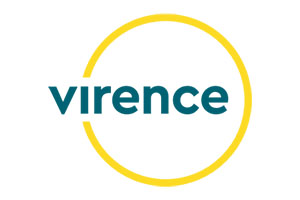
Virence Centricity integrates seamlessly with other office productivity tools while providing rock-solid security and customized workflows. The modular approach at work here may take some getting used to, but it will save time in the long run.
What we like: Vivence seems an excellent choice for small to mid-sized practices buckling under the strain of paperwork. Support is good to excellent. Uptime is among the best. And the patient portal is easy to use and reliable across multiple platforms.
Flaws: If you have a large practice, you might find Centricity wanting. The free demo is not very good.
Who Needs EMR Software?
Any healthcare practitioner interested in greater productivity, enhanced medical record security, and a more streamlined and efficient operation should consider EMR software. That includes everything from a small one-person practice to a thriving clinic. EMR software solutions enable greater productivity, reduce claim errors and improve trust between doctor and patient.
If you are tired of chasing down paper medical records, tired of claims being denied because of missing or outdated information, or tired of patients migrating to other practices that offer a more satisfying experience, you need EMR software.
How We Ranked
In compiling our rankings, we looked at dozens of different EMR software vendors. Every aspect of each company was put under the microscope, from their BBB rating to the learning curve involved in mastering their product.
We looked at the various plans each company offered and the pricing of each plan. We assessed the quality of the free demo, whether the vendor offered a more comprehensive demonstration to interested parties, and whether a reliable assessment of the software could be gleaned from those experiences.
We considered ease of use, and whether the transition from paper to digital was likely to be disruptive. And if so, how disruptive? And we looked into the vendor’s uptime record. Because if you cannot get into the system, it will not do you much good.
If the vendor offered a patient portal, we put that to the test as well. We wanted to know if it was equally accessible from different platforms and whether it actually added any value to the patient experience.
Finally, we spent long hours sizing up the quality of training and support offered by the different vendors. Who offered free training, and who charged extra? What form did training and support take (Skype calls, live chats, etc.)? Were members of the support team knowledgeable and friendly? And did the vendor stay by your side once you launched? Or did they head for the digital hills never to be seen again?
FAQs
Q: What is EMR software?
A: EMR – or Electronic Medical Records – software provides doctors and other healthcare providers with a fast and simple way to streamline their operation and improve the patient experience. It has helped countless practices large and small improve efficiency and reduce the number of denied claims by bringing all patient data together under one roof and linking it to powerful algorithms that organize it in myriad useful ways.
Q: How important is EMR customer support?
A: When shopping for EMR software, you are going to hear a lot about customer support. This is because even the simplest EMR system takes some getting used to. It is crucial to have a patient, knowledgeable person from the software company on hand to shorten the learning curve. With the operative words being ‘patient’ and ‘knowledgeable’. That’s because poor customer support can be as bad, or worse, than no customer support.
Q: What is the difference between EMR and EHR software?
A: EMR and EHR software systems are often confused for one another. But telling the two apart is actually pretty easy (1). EMR software is typically an in-house system focused on practice management. It may extend as far as a patient portal and e-scripting, but that is about it. EHR software, on the other hand, interacts with a multitude of external databases to facilitate communication between providers.
Q: Can I customize EMR software?
A: Most EMR software systems (not all) allow you to customize various features to meet the needs of your practice. This ability is quite popular with specialists who often deal with the more esoteric aspects of patient history and care. By being able to shape the EMR software to their needs, they enhance patient tracking and ensure more accurate diagnosis and more effective treatment.
Q: Can I get a live demonstration of EMR software?
A: Most developers will offer live demonstrations of their software system on their website. Typically you will need to register and login to access it (2). The live demo gives the customer a taste for how the software operates. You can decide if you like or dislike the interface, whether it seems intuitive enough for you and whether it seems like it might be a good match for your practice.
Q: What if I want a more detailed demonstration of EMR?
A: In some cases, it may not be possible to get a comprehensive overview of the software’s capabilities in just a few minutes. In such cases, your best course of action is to contact the company and arrange for a more detailed demonstration. Sometimes they will provide you access to a more fully fleshed out online demonstration. And in other cases, someone will come to you and take you through things personally.
Q: Are EMRs HIPAA compliant?
A: In 1996 congress passed the Health Insurance Portability and Accountability Act, or HIPAA (3). This landmark legislation laid out specific rules regarding the collecting and handling of private medical records. Since EMRs are a means for organizing and, in some cases, distributing medical records, you can imagine that HIPAA compliance is rule #1 as far as developers are concerned. So yes, any reputable EMR is HIPAA compliant.
Q: What is ONC certification?
A: ONC stands for the Office of the National Coordinator for Health Information Technology (4). Electronic Medical Records software that carries the ONC seal of approval has been thoroughly vetted to ensure it provides certain vital capabilities. These typically include a patient portal, medical billing, reporting functions, and more. It is strongly advised that you avoid EMR software that is not ONC certified.
Q: Is EMR software secure?
A: HIPAA requires robust security for all patient records. ONC will not certify an EMR program unless they are satisfied it is HIPAA-compliant. And, of course, major security breaches would spell a quick end for any aspiring EMR system provider. As such, all reputable EMR developers use state-of-the-art encryption, and you can be reasonably certain that any ONC-certified EMR software is both safe and secure.
Q: Does EMR software meet regulatory requirements?
A: There are more government regulations regarding the private use and transfer of confidential medical information than we have room to list here. Beginning with the aforementioned HIPAA regulations first enacted in 1996 and extending to the more recent Medicare Access and CHIP Reauthorization Act (MACRA) (5). All ONC certified EMR software is in full compliance with these and other relevant regulations.
Q: Is there a downside to EMR software?
A: Some low-end EMR systems are not HIPAA compliant. Also, it is rare but not unheard of, for EMR updates to throw some customers for a loop. A feature they found particularly useful may suddenly be replaced by another, allegedly better, feature. In addition, if you agree to a long term subscription and decide shortly after signing on that the software is not what you thought it was, you have little recourse.
Q: How much does EMR software cost?
A: There are a wide variety of pricing plans in play when it comes to EMR software. Some are quite reasonable, while others are quite expensive. Most vendors offer different levels of functionality for different prices. In addition, some vendors will require you pay for training, while others will not. Most do not require any type of large upfront fee to get started. Instead, you simply pay for the first month, and access is granted as soon as payment clears.
Q: Will I have to constantly learn new things because of updates?
A: Most developers update their software on a regular basis. Many of these updates are barely noticed and do not require you to learn anything new. However, on occasion, a major update may occur that alters the way you interact with the program. In most cases, ample warning is given that such updates are coming. Subscribers are taught in advance what to look for and how to work with the new or altered functions before they come into play.
Q: What does ‘cloud-based EMR’ mean?
A: ’Cloud’ refers to an internet-based server belonging to the vendor where the software resides (6). Anyone who pays the fee is granted access to the software, typically for a month at a time. Many types of software have adopted the cloud-based subscription model, and there are certainly some advantages to it. Updates are instantly available to all subscribers, for one. There is also no need to worry if the software will be compatible with your system.
Q: Is the EMR setup process complicated?
A: As you may have guessed, with a cloud-based subscription model, there is no setup. Instead, you gain access, as we just mentioned. The access period starts as soon as your payment is verified and is usually good for a month, a year, or whatever other time frame the vendor offers and you agree to. Keep in mind, however, that although you gain immediate access, you will still need customer support to teach you how to use the software.
Q: How much does it cost to set up EMR software?
A: Because there is no setup there is no setup cost. In most cases. We say that because there are still a few holdout developers who offer EMR software using the now old-fashioned perpetual license model. The perpetual license model will be familiar to anyone who ever purchased a CD or DVD with a software program on it.
Q: Would I be better off using free EMR software?
A: The existence of free EMR software causes some to wonder if they should be paying for an EMR system. It is a fair question. But free EMR programs are like free anything else; you pretty much get what you pay for. Yes, they will provide some very basic functionality. But customer support is virtually nonexistent, customization is out of the question, and there is usually no way to schedule appointments, or use the program to handle your medical billing.
Q: Will I be able to easily switch vendors if I want to?
A: If you signed a long term contract, you will have trouble extricating yourself from it, unless you can prove some type of wrongdoing on the part of the vendor. Be aware, too, that even if you faithfully adhere to the contract then switch vendors when said contract expires, the current vendor may play the role of the jilted lover and drag their feet during the transition. For the record: no companies on our list have a reputation for acting in such a way.
Related Articles
Medical billing software
Pharmacy software
Recap
EMR software enables practices large and small to streamline their office processes and improve their relationships with their patients. All the while reducing the number of denied claims and increasing profitability.
Almost all contemporary EMR systems are offered on a subscription basis, with the user paying a monthly fee to gain access to a cloud-based program. EMR systems provide a range of advantages over systems based on paper records and various independent productivity tools.
Those advantages include a single, unified patient chart, enhanced patient tracking, e-scripting, a patient access portal, and much more. EMR software has revolutionized the way medical professionals run their practices and lies at the heart of the enhanced patient experience.

